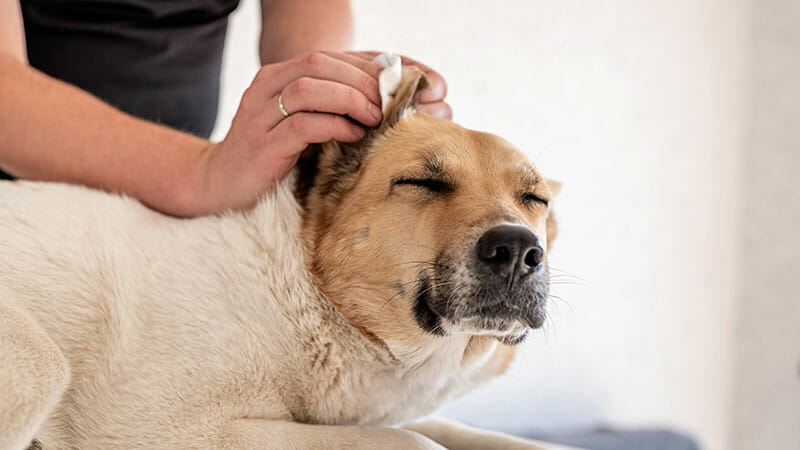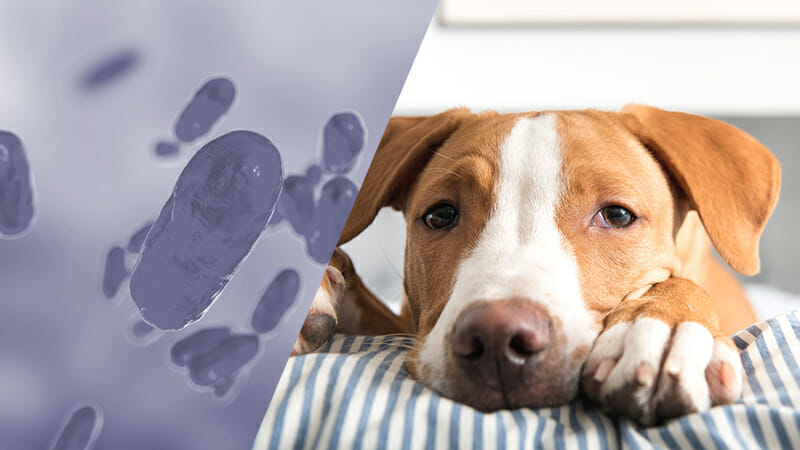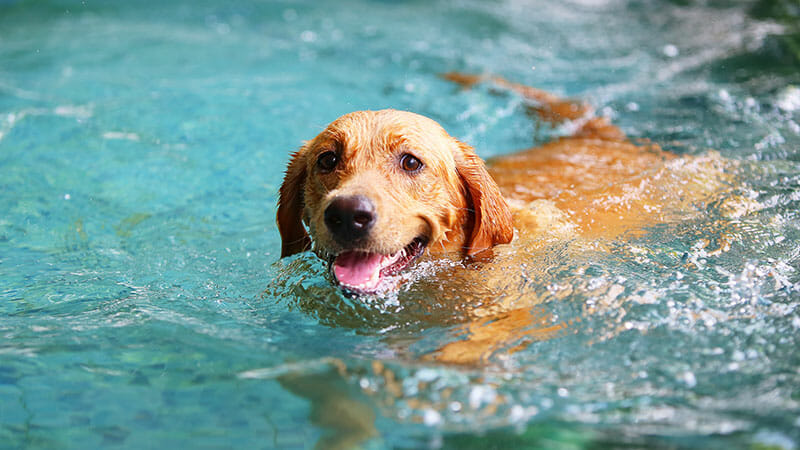Ear infections are the second most common reason for vet visits. Ear infections tend to be common in dogs who have long, droopy ears—such as basset hounds and cocker spaniels—and breeds that typically grow hair in their ear canals—such as poodles and poodle mixes.
But how will you know your pup is suffering from an ear infection? They can’t come out and tell us, so look for these signs:
- Discharge from the ear, including pus or blood
- Odor around the ear or coming from the ear
- Excess scratching, pawing, or rubbing at the ears
- Violent head shaking or “ear snapping”
- Redness in the ear canal
- Sensitivity or pain around the ears, especially when touched
- Ear swelling
- Masses around the ear area
If you notice any of these symptoms, do not attempt to clean out your dog’s ears. Instead, call your vet and schedule an appointment so your dog can be examined and prescribed any necessary medications and treatments.
When to Clean Your Dog’s Ears and When Not To
How often should you clean your dog’s ears at home? Unfortunately, there’s no one-size-fits-all answer. Under-cleaning can allow yeast and bacteria to build up, which can lead to painful infections. But over-cleaning can strip your dog’s ears of healthy wax and lead to irritation.
Healthy wax helps to lubricate and protect the sensitive skin inside the ear, so it’s important not to strip it all away. Your vet will be able to provide detailed advice specific to your dog, but your goal should be to only clean your dog’s ears when they’re dirty.
Your dog’s breed, coat type, activity level, and wax production rate factor into how quickly his ears will get dirty. But if your dog:
- Swims
- Rolls in the dirt
- Digs
- Lives in a humid environment
- Has a predisposition to ear infections…
Then your dog will likely require some extra attention. However, most vets recommend once monthly cleaning as a general rule of thumb for “normal” dogs.
Check your pup’s ears at bath time, during a grooming session, or after playtime to make sure there’s no dirt or debris in their ears. A gentle wipe down of the ear flap is usually good enough for healthy ears, but if you notice dirt, debris, or excess brown buildup in the outer ear, it might be time to invest in a safe, at-home ear cleanser for flushing.
Ask your vet which brand and type of cleanser they recommend for your pup. They’ll also be able to show you the proper technique for wiping out the ears, as well as for flushing them.
How to Prepare Your Dog for Having His Ears Cleaned
If your dog has never had his ears cleaned before, he might be a little wary about letting you mess with them—especially if he’s had ear infections before. Like with nail trimmings, it’s best to approach ear cleanings as a training exercise.
Get out your training treats and prepare yourself for multiple short sessions over a period of a few days—or weeks. No matter how slowly the process goes, it’s important to make it a fun, pleasant experience for your dog. It might be a lot of work in the short-term, but you’ll be grateful you and your pup put in the time in the long run.
Start small, depending on how comfortable your dog already is with you messing with his ears. If he won’t sit still long enough to let you take a look inside them, there’s your starting point. If he’s cool with you taking a peek but gets nervous about the cleanser bottle or the wipes and cotton balls you’ll use to clean them, start working on desensitizing him to those items being near his face, then being near his ears, then touching his ears, and so on.
Remember: If the training session suddenly goes downhill—maybe your dog decides he’s done sitting still or gets anxious about the cleanser in his ears, go back a few steps to something he’s already mastered, give him a treat for getting it right, and end the session on a good note. Before you know it, you’ll have a dog who sits still while having his ears cleaned.
When in Doubt, Talk to Your Vet
Your vet is a great resource. So, if you aren’t sure if the buildup in your dog’s ears is excessive, or if you think he’s a little more sensitive about having his ears touched than usual and might have an infection, give them a call and make an appointment. They’ll provide medical guidance and steer you in the right direction for conducting safe, at-home ear cleanings.




